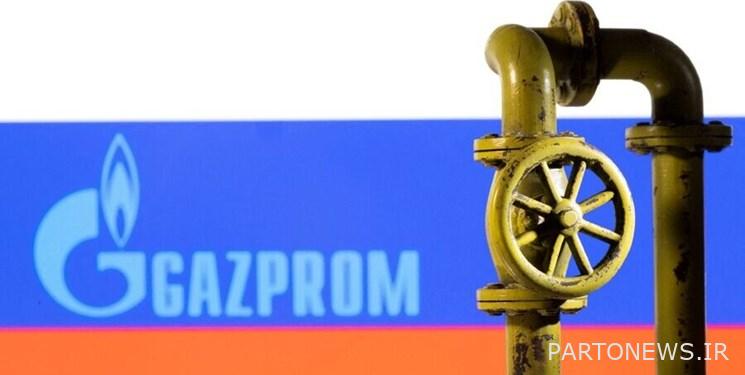2 Iran’s ideas for trade with Russian gas/ The route of gas export to 4 neighboring countries will be opened

According to the economic correspondent of Fars news agency, Russia and Iran are the first and second holders of natural gas resources in the world, respectively, and they intend to carry out strategic cooperation in the field of gas trade in the new world order after the war in Ukraine.
In this way, in the 40 billion dollar memorandum between Iran’s National Oil Company and Russia’s Gazprom Company, several axes related to gas trade have been defined, which include:
- 15 billion dollars investment for the development of North Pars and Kish gas field
- 10 billion dollar investment for increasing the pressure of South Pars gas field
- Completing the Iran-LNG project and developing floating LNG and small-scale LNG
- Construction of natural gas export pipelines
- Russian gas import and swap
One of the most important aspects of the gas cooperation between the two countries is “Russian gas import and swap”, which seems to reach the contract conclusion stage sooner than other issues.
Mohsen Khojstemehr, CEO of the National Iranian Oil Company, referring to the signing of the 40 billion dollar memorandum of understanding, said: The time required to turn the memorandum into a contract will vary depending on the complexity of the work. For example, the signing of gas swap and product swap contracts and technology transfer will not take much time, and even in the matter of gas swap, we are now in the final stages of negotiations to sign the contract.
* There is an infrastructure to import 20 billion cubic meters of Russian gas to Iran
Gas trade is a set of measures including import, swap, transit and export of gas that different countries try to get the most economic and political benefit by using their geographical location.
Currently, due to the lack of gas in the country, Iran can take an effective step to become the gas hub of the region by importing Russian surplus gas at a reasonable price and exporting it at a higher price to neighboring countries.
Referring to the war between Russia and Ukraine and the country’s gas export restrictions to Europe, Mohammad Sadiq Jokar, head of the Institute of International Energy Studies, says: According to various statistics, the Russians are now facing 75 to 95 billion cubic meters of available gas, which they used to either export to Europe or plan They had exports. For example, they wanted to open Nord Stream-2, which should have been implemented a year or two ago, and Nord Stream-1, which is currently working with less than 40% of its capacity (55 billion cubic meters of gas per year), in practice for a capacity of 75 to 95 billion There is no market for cubic meters of Russian gas.
He explained: This is a key opportunity for the Islamic Republic to transfer this gas from Turkmenistan through the most operational possible route and by reversing the CAC pipeline that connected Turkmenistan gas to Russia in the past and now has a capacity of 30 to 50 billion cubic meters to transfer it from Turkmenistan uses only 5.5 billion cubic meters of it. Another important point is that we also have two pipelines that can deliver gas from Turkmenistan with a final capacity of 20 billion cubic meters.
As a result, in terms of infrastructure, it is possible to import 20 billion cubic meters (55 million cubic meters per day) of Russia’s surplus gas to Iran.
* Iran’s two scenarios for trade with Russia’s surplus gas
Now the basic question is, if Iran succeeds in signing the contract to import 20 billion cubic meters of gas annually from Russia, what will be the priorities for its use? To answer this question, we first examine the current situation in Iran.
Currently, Iran has three gas export contracts with Turkey, Iraq and Pakistan. Iran’s gas export contract to “Turkey” is 10 billion cubic meters per year. Recently, the President of Turkey, Recep Tayyip Erdogan, has shown a desire to increase gas imports from Iran.
In an interview with TRT news channel, he said: Turkey will increase its purchase of oil and natural gas from Iran, and the trade volume between Iran and Turkey will increase from 7 billion dollars to 30 billion dollars per year.
Also, Iran has two gas export contracts to Baghdad and Basra (Iraq), based on which it must export 35 and 25 million cubic meters of gas to Iraq daily, respectively. Of course, Iran’s gas exports to Basra are carried out in smaller volumes than the contract figure.
Recently, Ahmed Al-Abadi, the spokesman of the Iraqi Ministry of Electricity, referring to negotiations with Iran to increase gas imports, said: the volume of gas imported from Iran is currently around 43 million cubic meters, while Iraq needs 55-60 million cubic meters. Negotiations with Iran and the coordination of the Ministry of Petroleum to increase the gas supply continue.
The annual export contract of 8 billion cubic meters of Iranian gas to “Pakistan” has not been implemented since 2014 for various reasons. This contract is valid until 2039. Also, Iran has the capacity to export gas to Oman.
In addition to gas export contracts, Iran also needs to import gas to meet its domestic needs. According to Jalil Salari, CEO of the National Oil Products Refining and Distribution Company, last year due to the lack of gas, 15 billion liters of valuable liquid fuel, including 9 billion liters of diesel and 6 billion liters of fuel oil, were burned in power plants to provide stable electricity for the country.
In fact, Iran has two scenarios for using Russia’s surplus gas, which are:
- Strengthening Iran’s gas exports to Turkey and Iraq and reviving Iran’s gas export contract to Pakistan
- Use of gas in power plants and export of released liquid fuel
* Proposing the use of Russian surplus gas in the paradigm of optimizing fuel consumption
Undoubtedly, using Russia’s surplus gas to fuel power plants and export its equivalent liquid fuel is the most economical for the country in the short term. Last year, 25 million liters of diesel and 16 million liters of fuel oil were consumed daily in power plants. Currently, according to the statistics of the Energy Exchange, the price of one liter of diesel is $0.78 and the price of one liter of diesel is $0.47.
If each cubic meter of Russian gas is imported to Turkey at the current price of Iran’s gas export, i.e. $0.25, and replaces diesel and fuel oil in power plants, Iran can earn $6 billion more annually by exporting liquid fuel.
At first, it seems that replacing the gas imported from Russia with liquid fuel in power plants has the most economic benefits, while Iran can use the rest of the surplus gas (14 million cubic meters per day) to strengthen the export markets, but it should be He also paid attention to other aspects of the story.
The development of Iran’s gas export markets, although in the short term, it generates less income than the second scenario, but in addition to generating income, it also causes the political dependence of neighboring countries on Iran.
It should also be noted that although the use of natural gas in power plants has higher economic efficiency in the short term, it is defined macro-wise in a contrasting paradigm with “optimization of fuel consumption” and “development of export markets”.
In other words, in the fourth scenario, in order to meet the domestic demand for gas, Iran removes itself from the gas trade equations of the region and exports liquid fuel and makes a profit, but after a while with the increase in consumption, it is again forced to use liquid fuel in power plants, and in this case, neither the fuel consumption optimization is done, nor the gas market is developed, nor will the country receive any income from the export of liquid fuel.
Of course, the use of gas imported from Russia in power plants can be a favorable scenario if it is stipulated that the revenues from the export of liquid fuel will be used to finance fuel consumption optimization projects.
All in all, it is better for the Ministry of Oil, in case of concluding a contract to import gas from Russia, to choose a combination of the two scenarios proposed in such a way that it leads to the strengthening of the paradigm of “optimizing fuel consumption” and “developing export markets” and only paying attention to its own short-term interests. don’t
end of message/

